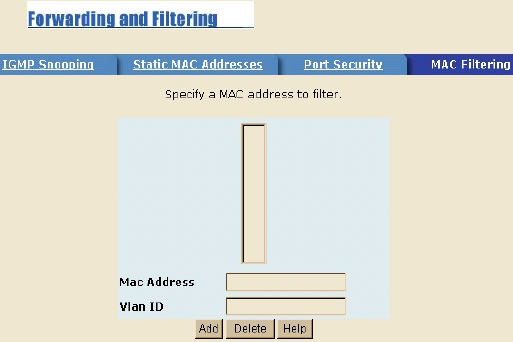Switch User Manual
Table Of Contents
- Chapter 1 Introduction
- 1.1 Package Contents
- 1.2 Key Features
- Chapter 2 Installation
- Chapter 3 Physical Description
- Chapter 4 IP Address Configuration
- Chapter 5 Web-Based UI Management Interface
- 5.1 Home Page
- 5.2 Port Status
- 5.3 Port Statistics
- 5.4 IP Address
- 5.5 Switch Setting
- 5.6 Port Controls
- 5.7 Link Aggregation
- 5.8 Filter Database
- 5.9 VLAN Configuration
- 5.10 Spanning Tree
- 5.11 Port Sniffer
- 5.12 SNMP
- 5.13 Signal to Noise Ratio
- 5.14 Security Manager
- 5.15 TFTP Update Firmware
- 5.16 Configuration Backup
- 5.17 Reset and Rebooting System
- Chapter 6 Application
- Chapter 7 Appendix

5.9 VLAN Configuration
A Virtual LAN (VLAN) is a logical network grouping that limits the broadcast
domain. It allows user to isolate network traffic so only members of the VLAN
receive traffic from the same VLAN members. Basically, creating a VLAN
from a SP3508A is logically equivalent of reconnecting a group of network
devices to another Layer 2 switch. However, all the network devices are still
plug into the same SP3508A physically. The VDSL Switch supports port-
based and protocol-base VLAN in web management page. In the default
configuration, VLAN support is enabling and all ports on the SP3508A belong
to default VLAN (VID: 1).
Support Multiple VLAN (IEEE 802.1Q VLAN)
Port-based Tagging rule VLAN is an IEEE 802.1Q specification standard.
Therefore, it is possible to create a VLAN across devices from different
SP3508A venders. IEEE 802.1Q VLAN uses a technique to insert a “tag” into
the Ethernet frames. Tag contains a VLAN Identifier (VID) that indicates the
VLAN numbers.
25










